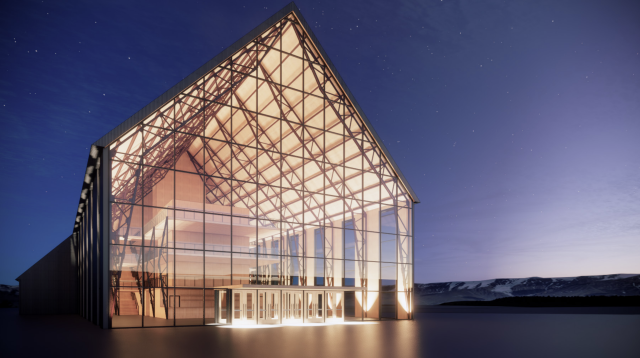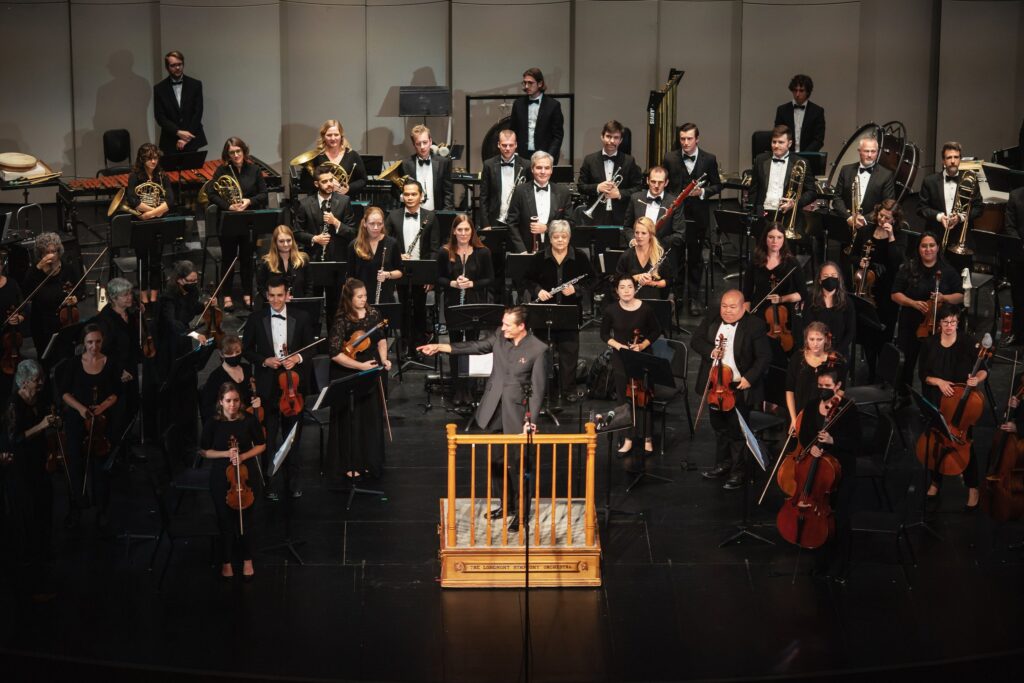
Longmont’s performing arts community is a balancing act of ambition and reality, a place where dreams are big but resources are scarce.
It’s “innovative and scrappy,” says Assistant City Manager Sandi Seader. This much is evident in Longmont’s cultural landscape — a mix of long-standing institutions, new ventures and community-driven initiatives. As the town seeks to expand its cultural offerings, particularly live performances, it faces a number of challenges, including limited funding and mixed support from locals.
Longmont’s aspiration to become a cultural hub has been a driving force behind several recent initiatives, most notably a proposed arts and entertainment center. The vision was grand: a $45 million facility in a converted sugar factory that would not only provide a home for local performing arts groups but also draw in regional and national acts.

That dream hit a major roadblock last November when voters decisively rejected the ballot measure to fund the project as well as two other measures for new city facilities: a library branch and a rec center.
Seader believes the council’s approach of presenting three different proposals for voters to select which initiative to fund was too complicated.
“The council’s perspective was that they were allowing residents to choose what they wanted,” she says. “But I am afraid that having all three on the ballot made it appear as if the council was asking for everything, which it wasn’t. I thought the plan for the performing arts complex at the abandoned sugar factory was very original and intriguing. A lot of other people thought so too, but it just was too much bundled with all the other facilities.”
Longmont city council member Marcia Martin offers a far more candid appraisal. “The ballot initiatives failed because property taxes had gone up after the Gallagher Amendment had been repealed, and everybody was just mad about being taxed,” Martin says. “We are disappointed with how the campaign for the performing arts center turned out, but I believe it was the wrong year. Even if everything had gone perfectly, I doubt it would have been a winning issue in 2023.”
The proposed facility was seen as a much-needed upgrade to Longmont’s existing cultural infrastructure, which is beginning to show its limitations as the community grows. Scott Moore, owner of Jesters Dinner Theatre, offers a sentiment shared by many in the community about why people might have voted against these city-supported initiatives.
“I never think it’s the responsibility of the government or anything like that to keep us or any other business going,” says Moore, who is in the process of selling the theater’s Main Street property with plans to close in the next couple years. “I just would love to see the economy get to where people feel more comfortable spending money. I don’t blame folks for not showing up — it’s tough right now, so I just hope for a turnaround economically.”
‘No money for frivolities’
As Longmont heads into 2025, the city is bracing for a tight budget year. The lingering effects of post-pandemic inflation, coupled with the need to address core infrastructure needs, have left little room for “bells and whistles” in the budget, as Martin puts it.
“Even though we have a really good, conservative chief financial officer working in the city who plans for costs to go up, the period of post-pandemic 9% inflation that we experienced blew all that stuff out of the water,” Martin says. “City workers need raises to match inflation… police and fire are unionized, so they’re negotiating and getting huge raises. It’s something like an 8% raise, which the public will be able to see when the budget is presented, but the city has to manage all of those expenses, and that means there’s just no money for frivolities.”
Rather than providing grants, Longmont is continuing its long-standing practice of directly hiring arts groups for services, such as contracting local arts groups to perform at city-sponsored events like the Fourth of July celebration or as carolers during the winter holiday season.
“The city doesn’t make grants to things that are far from core human needs,” Martin says. “We give human services grants to homeless shelters and activities that try to unify the community by providing services to marginalized segments of the community, rather than performing arts.”
Other city-sponsored artist programs include the Longmont Creative District, which is supported by Colorado Creative Industries (CCI) and the Colorado Legislature, and the Longmont Public Media Center, which provides resources for local digital creators. Local arts organizations can apply for grants from regional organizations such as CCI and the Scientific and Cultural Facilities District (SCFD).
‘Hunger and thirst’ for arts
The SCFD heavily supports the city’s only rentable auditorium, Stewart Auditorium at the Longmont Museum. Since opening in 2015, the venue has quickly become the beating heart of Longmont’s performing arts scene, hosting events ranging from classical music concerts to film screenings and dance performances. Justin Veach, Stewart’s curator of public programs and manager since 2018, says he has observed a consistent uptick in the number of events since taking over the post.
“This space has an awful lot of potential, but we are limited in terms of staffing,” Veach says. “I’m the only full-time staff member here. If we had more personnel, we would increase the number of programs we offer. We’re doing great things considering resources, but there are a lot of possibilities here. I think the arts in Longmont in general are maturing in a lot of ways. There seems to be a hunger and a thirst for programming.”
Veach reports that a dozen renters used the auditorium for performing arts programs in 2023, hosting a total of 60 events. But he says the facility is limited by its design as a classical music venue and the finite dates available for organizations to book.
“Stewart Auditorium is great, but it only holds about 250 people — that’s not very many,” Martin says, reflecting a broader sentiment that the city of almost 100,000 needs a larger space to meet the growing demand for cultural programming. Even with the newly renovated Stewart Family Courtyard at the museum, the space provides 700 seats for outdoor events.
That means the city’s largest performance space has a maximum capacity of 950 people — and that’s only when the weather is good. In comparison to its neighbors just 15 miles west, Boulder has two large city-owned and leased spaces with indoor seating: Chautauqua Auditorium and the Dairy Arts Center.
Identical cousins
The challenges faced by Longmont’s arts scene are not unique. Boulder also grapples with a lack of available performance spaces. The Dairy Arts Center, the city’s primary rentable venue, is often fully booked, leaving local arts organizations scrambling for stage time.
While Boulder has several theater companies, including BETC, Local Theater Company and The Catamounts, Longmont only has two: the Longmont Theatre Company (LTC) and the Jesters Dinner Theatre. LTC, the oldest of the two, was founded in 1957. Like the soon-to-close Jesters, it owns a historic 300-seat theater on Main Street, a rare asset in a region where many arts organizations rent space.
But ownership hasn’t shielded LTC from its own problems. The company is currently embroiled in a legal dispute in the Boulder County District Court over allegations that its board “failed to abide by” organizational bylaws. According to the eight-page court filing, Board Chair Faye Lamb led a campaign to deprive volunteer board members of their voting rights to consolidate power.
An email to Boulder Weekly from LTC staff on July 27 stated they were unable to comment because they “have taken the summer to vacation, and also [to] do some theatre maintenance.”
Long-time supporters’ dissatisfaction with the company’s alleged actions and subsequent silence have cast doubt on LTC’s future. “We wish the best for everybody in that particular situation,” Seader says. “LTC’s been there a long time, so I hope they’re able to resolve something, but the city isn’t currently involved in that dispute.”
The Longmont Symphony Orchestra (LSO) is one of the city’s most successful cultural organizations, but still subject to the limitations of local infrastructure. The popularity of the LSO under conductor Elliot Moore has grown to the point where its traditional venues are no longer adequate.

To accommodate its growing audience, the orchestra has partnered with Skyline High School, part of the St. Vrain Valley School District, to use the 1,350-seat Vance Brand Civic Auditorium that LSO frequently sells out. The orchestra’s reliance on a high school auditorium, albeit a well-equipped one, underscores the need for a dedicated, professional performance space that can serve not only the LSO but the entire community.
‘Big solutions’
A feasibility study conducted by Johnson Consulting in March 2021 supports the push for a new performing arts center. According to the study, 85% of respondents cited a lack of events in Longmont as the reason they left the city for entertainment. Nearly half pointed to the absence of suitable venues as a significant factor. It argued that constructing a 1,000-1,500-seat center for performing arts and other events would be a significant economic boost.
In response to the failed ballot measure that would have funded such a space, the St. Vrain Valley Alliance for Arts and Entertainment, originally focused on and named after Longmont, has shifted to a more regional approach.
Recognizing that Longmont alone may not be able to sustain a large-scale arts center, the alliance has broadened its scope to include 13 surrounding communities, aiming to create a regional arts and event center that serves both performance and educational purposes. The goal is to create a facility that serves the entire St. Vrain Valley and attracts events that would otherwise force residents to travel to Boulder or Denver.
“The exterior community is the key here,” says Stevan Kukic, alliance president. “The previous initiative was only for Longmont citizens to vote on, but if this evolves into a public-private partnership, we would like to include the entire region served by the school district. Thirty percent of people in Longmont voted for a performing arts center even in the year when anything that had the word ‘tax’ in it was voted down, right? I think that while that endeavor didn’t succeed, we did succeed at getting this idea on the radar for a lot of people in this area.”
By tapping into the broader St. Vrain Valley community, the alliance hopes to build the necessary support and funding to make this vision a reality. The group hopes an arts festival next summer will bring organizations together from across the region, providing an opportunity to listen to what people are interested in and helping them figure out where to put it.
“We know our plan is ambitious, but I don’t know of very many small ideas that have resulted in really big solutions,” Kukic says. “We don’t view this as something that’s going to happen in the summer of 2025. We view this as something that’s going to build momentum. We’re not asking the question of whether this should happen; we’re asking a question of how it should happen and when it will happen — this is something our area needs.”
